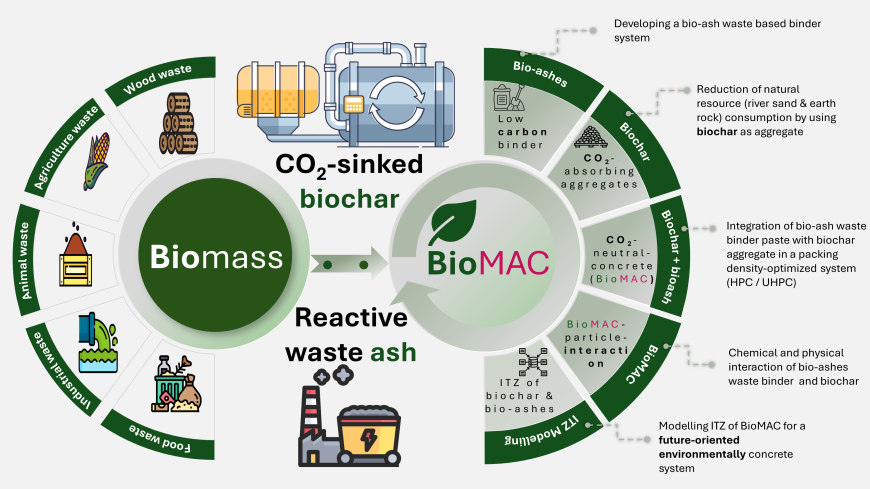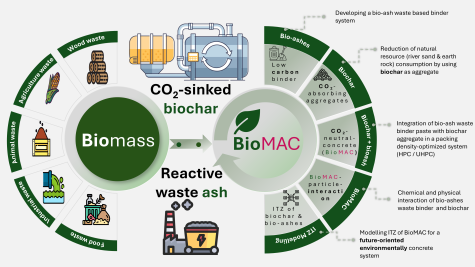Project abstract
The BIOMAC project aims to develop and scientifically investigate CO2-neutral concretes with environmentally friendly aggregates in combination with reactive binders (SCMs), both based on biomass-based waste materials. The utilization of these CO2-negative residual materials as binder and aggregates holds great promise for an environmentally future oriented concrete systems, addressing both environmental and economic concerns by reducing CO2-footrpint while decreasing the consumption of natural resources and burden on landfills. In order to achieve this goal, a comprehensive characterization of these residual materials to be used as well as dedicated research into their interactions in the material composite will be carried out in this project. To research these CO2-neutral systems, in the first step the TU Darmstadt (TUDa) will be focus on the integration of biomass-based ashes as OPC substitutes (SCM > 50 %) at the binder level and that of the University of Kassel (UK) on the integration of CO2-negative biochar aggregate in a packing density-optimized concrete system. In a joint step, these two approaches are combined and investigation on the interaction in the interfacial transition zone (ITZ) will be carried out. Moreover, a modelling approach will be developed to predict the interactions and mechanical behavior of the ITZ between the matrix and biochar aggregates. To simulate the interaction between biochar (UK) and the binder matrix (TUDa), experimental investigations are carried out to define the boundary conditions of the model, see Fig. 1.. The model approach is based on a two-particle system, which culminates in a scalable BIOMAC-model-element. This will be transferred experimentally and simulatively to a multi-particle system in collaboration with both project partners. The results of this funding period form the basis for a concrete technology upscaling to a future and environmentally oriented BIOMAC system. Furthermore, the BIOMAC results are to be interlinked with the three modules of the SPP in the next steps in order to identify the sustainable pathways for a new type of NET-ZERO concrete.
Applicants: Koenders, TU Darmstadt and Middendorf, UKassel



